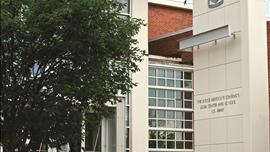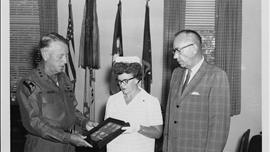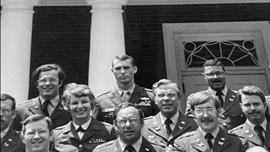
There is a new leader in your organization. First impressions are good. The leader projects confidence, charisma, and competence. Initially, the rapport developed across the organization is strong. However, as time goes on, what was initially projected as confidence increasingly gives way to an aggressiveness approaching bullying.

In his book, The Centaur’s Dilemma, renowned national security practitioner and former U.S. Court of Appeals for the Armed Forces Chief Judge James E. Baker contextualizes the expansive development of AI and its emerging legal structure. As in his previous literary works, Baker frames his terms and issues, the most pertinent of which is the “Centaur’s Dilemma,” or “how to reap the benefit of AI for national security purposes without losing control of the consequences.”

News & Notes 2021 Issue 4

On 17 November 1966, four infantrymen—Sergeant (SGT) David E. Gervase, and Privates First Class Steven C. Thomas, Cipriano S. Garcia, and Joseph C. Garcia—on a five-man reconnaissance patrol in South Vietnam entered a small village and kidnapped a twenty-year-old Vietnamese woman named Phan Thi Mao.

On 2 June 2021, Hays Parks was buried amongst his fellow Marines at the Marine Corps Cemetery in Quantico, Virginia. This was as it should be, for those who knew Hays understood that he was a Marine’s Marine and a proud, vocal member of the Semper Fi fraternity. So, how did this dedicated “gyrene” find his way to the Army JAG Corps?

It is Day 1 in your job as the new special victims counsel (SVC), and you get a call requesting SVC services for a victim of domestic violence. Your automatic inclination is to inquire further as to whether or not the victim is a victim of a sexual offense; otherwise, you are of the belief that they are not eligible for services. But then you remember the training you received on domestic violence at the SVC certification course, which drives you to dig deeper.

The Novel Coronavirus Disease of 2019 (COVID-19) frustrated certain performance aspects of Department of Defense (DoD) contracts across the world. Among other things, contractors had problems getting their employees into and out of the Combined Joint Operations Area–Afghanistan (CJOA–A). Non-contracting activities were desperate to understand the associated rules, demanding contractors “figure out” a way to solve such entry and exit requirements.

If you’re going to be a lawyer and just practice your profession, well you have a skill, so you’re very much like a plumber; but if you want to be a true professional, you will do something outside yourself, something to repair tears in your community, something to make life a little better for people less fortunate than you. That’s what I think a meaningful life is—one lives not just for oneself, but for one’s community.

You and your spouse anxiously await word from the Personnel, Plans, & Training Office (PPTO) on your next assignment. Your spouse is hoping to obtain a highly sought-after staff judge advocate (SJA) or other leadership position. Will all the hard work, dedication, and time apart be worth it? Will it be rewarded with a coveted leadership position?

Obtaining testimony from federal civilian employees during an administrative investigation pursuant to Army Regulation (AR) 15-61 can be difficult. If approached improperly or without careful analysis, it can adversely affect both the investigation and any follow-on corrective action. This article examines some of the legal protections afforded to Department of the Army (DA) Civilian employees being interviewed as part of an AR 15-6 investigation, specifically when employee misconduct or criminal activity is suspected.